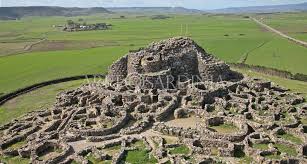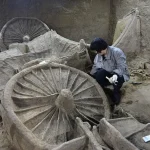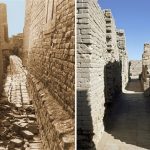Nuraghe Su Nuraxi: A Window into Prehistoric Sardinia

Located near the town of Barumini in the heart of Sardinia, Italy, Nuraghe Su Nuraxi is one of the most iconic and best-preserved examples of Nuragic architecture, dating back to the Bronze Age, around the 16th century BCE. It stands as a remarkable testament to the island’s ancient civilization, which developed in complete isolation from the great cultures of the Mediterranean.

The term “nuraghe” refers to the unique megalithic towers built by the Nuragic people between approximately 1800 and 500 BCE. Su Nuraxi, in particular, is a complex structure centered around a massive central tower (or “keep”), which originally stood over 18 meters high and was constructed using large basalt blocks without mortar. Surrounding this central tower are four smaller corner towers connected by walls, forming a quadrilobed bastion. Later, a maze of circular huts and additional fortifications grew around the main structure, turning the site into a bustling village.

What makes Su Nuraxi exceptional is not only its architectural ingenuity but also the insight it offers into the social and political life of Bronze and Iron Age Sardinia. Archaeological findings—such as pottery, tools, and weapons—suggest that the site was both a defensive stronghold and a center of community life. The presence of meeting huts and sacred wells also indicates complex religious and ritual practices.

Discovered and excavated in the 1950s by archaeologist Giovanni Lilliu, Su Nuraxi has since become a symbol of Sardinian heritage. In recognition of its cultural importance, it was designated a UNESCO World Heritage Site in 1997.
Today, Nuraghe Su Nuraxi attracts visitors from around the world who are fascinated by its mysterious origins, its monumental architecture, and the enduring legacy of a civilization that thrived over three thousand years ago. As one of the most important archaeological sites in the Mediterranean, it continues to inspire research and wonder.











